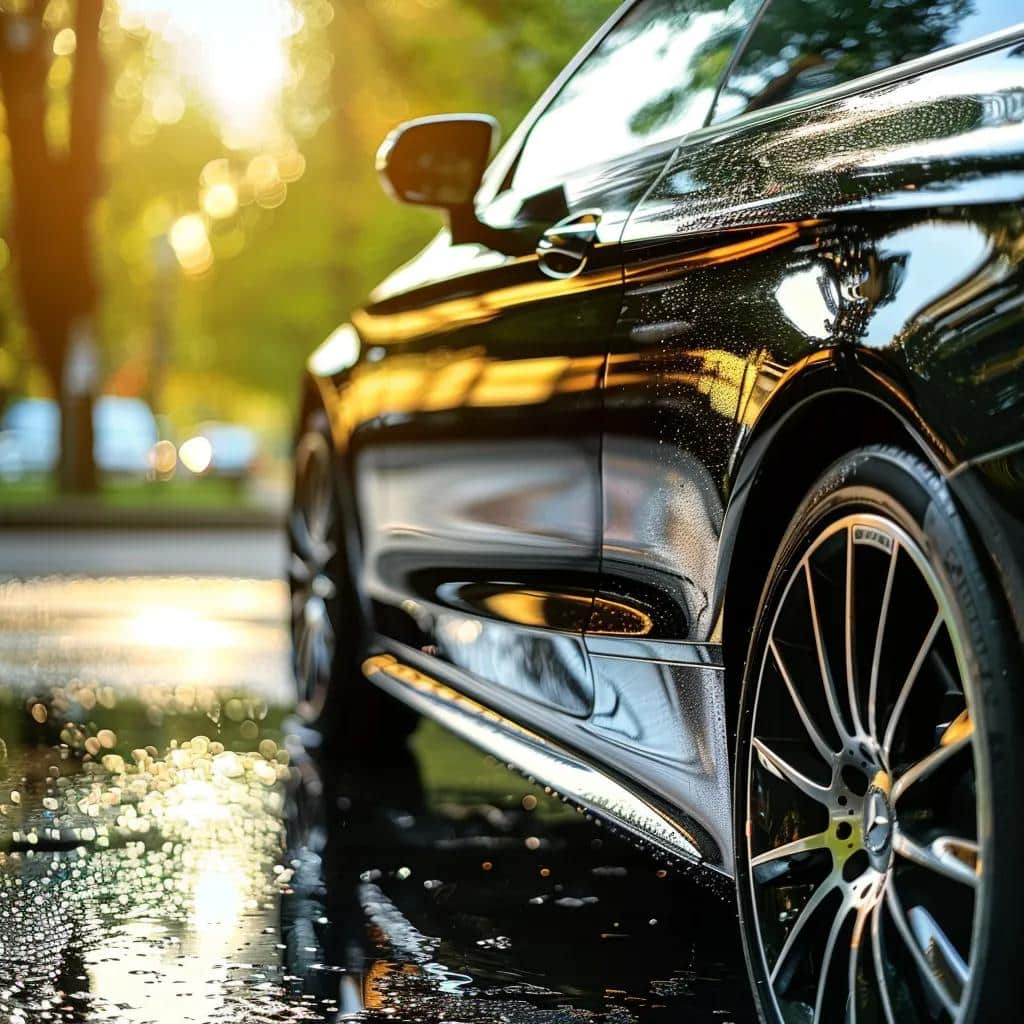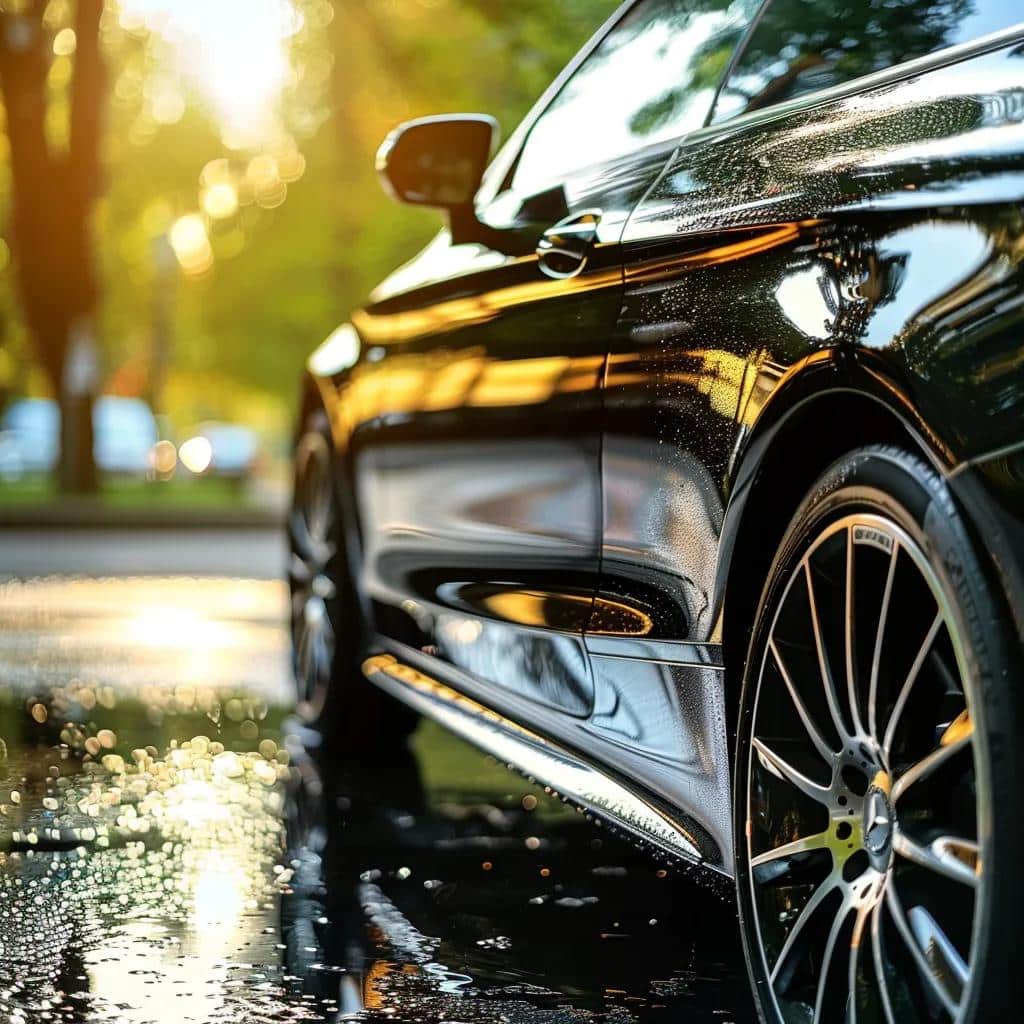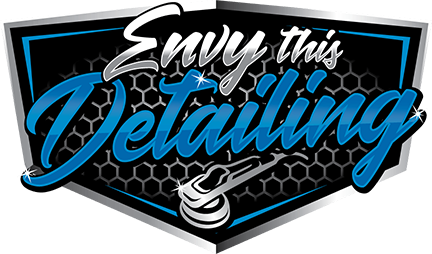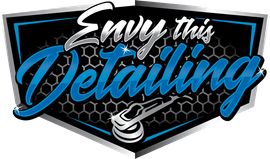Compare Scratch Removal Costs to Paint Protection Film

Is Scratch Removal More Expensive Than Paint Protection Film? A Detailed Cost and Value Comparison for Vehicle Owners

When evaluating the true cost of automotive paint care, many drivers in College Station, TX face a critical decision: pay for scratch removal repair now or invest in paint protection film (PPF) to prevent future damage. This article maps out the types and costs of car scratch repairs, explains PPF composition and protection benefits, delivers a direct upfront vs. long-term cost comparison, and guides vehicle owners on when to choose each option. By the end, you’ll understand how scratch removal expenses stack up against PPF investment and how Envy This Detailing’s expert services can preserve your vehicle’s appearance and resale value.
What Are the Different Types of Car Scratches and Their Repair Costs?
Understanding the specific nature of a scratch is key to estimating repair costs and choosing the right solution. Scratch depth determines repair methods and price, ranging from inexpensive clear-coat touchups to full-panel repainting. Recognizing these distinctions lays the groundwork for comparing reactive scratch removal with proactive film protection.
What Are the Common Types of Car Scratches?
Car scratches fall into three major categories based on how deeply they penetrate paint layers:
- Clear-coat scratches occur only in the top transparent layer and often manifest as white lines.
- Primer scratches breach the clear coat and pigment layer, exposing dull primer gray.
- Deep metal scratches cut through all paint layers down to bare metal, risking corrosion.
Each scratch type demands a different level of intervention and cost, which influences the choice between one-off repairs and ongoing paint protection.
How Do Scratch Depth and Severity Affect Repair Costs?
Scratch severity directly impacts labor and materials. Minor clear-coat abrasions can cost as little as $50–$150 to buff and polish, whereas primer or base-coat scratches typically run $200–$600 for touch-up paint matching. Deep metal gouges that require sanding, filler, and full-panel repainting can exceed $1,200. Deeper damage demands more time and paint, driving up service fees and making recurring repairs less economical in the long run.
Types of Car Scratches and Repair Costs
The depth of a scratch significantly influences the repair method and cost, ranging from minor clear-coat scratches that can be buffed and polished to deep metal scratches requiring extensive repair work. The cost can vary from $50 to over $1,200 depending on the severity of the damage.
This information supports the article’s discussion on the different types of car scratches and their associated repair costs.
What Are the Typical Scratch Removal Methods and Their Price Ranges?
Professional scratch repair employs a range of techniques tailored to scratch type and depth. The table below summarizes common methods with their average price ranges and suitable applications.
Each method restores appearance reactively, whereas paint protection film prevents many of these scratches before they occur.
How Effective Are DIY Scratch Removal Options Compared to Professional Services?
DIY scratch kits and polishing compounds typically cost under $30 and can improve minor clear-coat blemishes but offer limited color matching and finish quality. Professional services deliver precise paint matching, proper surface preparation, and factory-grade clear coats that ensure durability. While DIY methods save money up front, they may leave visible imperfections that degrade resale value, making professional scratch removal services a more reliable long-term solution.
What Is Paint Protection Film (PPF) and How Does It Protect Your Vehicle?
Paint protection film is a transparent urethane overlay that shields automotive paint from rock chips, scratches, UV rays, and chemical stains. Applied by specialists, PPF creates a sacrificial barrier that absorbs damage, preserving the factory finish and minimizing future repair needs.
What Is Paint Protection Film Made Of and How Is It Applied?
PPF consists of a thermoplastic urethane layer bonded to a removable adhesive and a protective liner. Installation involves precision cleaning, templating, careful film alignment, and edge sealing by certified technicians. This professional process ensures seamless coverage and optimal adhesion, preventing peeling or lifting over time.
What Are the Key Benefits of Paint Protection Film?
Paint protection film delivers several distinct advantages for vehicle owners:
- Scratch and chip resistance: Deflects debris impact before it reaches the paint.
- UV protection: Blocks sun-induced fading and oxidation.
- Self-healing properties: Heat-activated film smooths out minor surface scratches.
- Chemical stain resistance: Guards against bird droppings, road tar, and acid rain.
- Enhanced resale value: Maintains a showroom finish that appeals to future buyers.
Benefits of Paint Protection Film (PPF)
Paint protection film (PPF) offers several advantages, including scratch and chip resistance, UV protection, and self-healing properties. PPF can also enhance a vehicle’s resale value by maintaining a showroom finish.
This citation provides additional support for the benefits of using paint protection film as discussed in the article.
What Are the Different PPF Coverage Options and Their Costs?
PPF coverage can be customized from high-impact areas to full-vehicle protection. The following table outlines typical packages and associated price ranges.
Partial front coverage addresses the zones most prone to chips, while full-vehicle installs deliver comprehensive defense and uniform appearance.
How Durable Is Paint Protection Film and What Maintenance Does It Require?
High-quality PPF typically lasts 5–10 years under normal driving conditions and often carries a manufacturer warranty. Maintenance involves regular washing with pH-neutral soap and gentle drying to prevent surface contaminants. Occasional inspection for edge lifting and professional resealing keeps the film performing at peak effectiveness, ensuring continuous paint preservation without frequent touchups.
How Does the Cost of Scratch Removal Compare to Applying Paint Protection Film?
A direct cost comparison reveals how a one-time PPF investment can offset repeated scratch repair expenses over a vehicle’s lifespan. Examining both upfront and ongoing costs highlights the preventive value of film protection.
What Are the Upfront and Long-Term Costs of Scratch Removal vs. PPF?
¹Estimated based on average regional repair frequency in College Station.
How Do Durability and Maintenance Affect the Overall Value of Each Option?
Scratch removal restores paint in localized spots but does not prevent new damage, leading to recurrent expenses. In contrast, PPF’s multi-year durability and simple upkeep minimize future repair costs and preserve the factory finish. Over time, PPF delivers a lower total cost of ownership and consistent aesthetic protection.
How Does Each Option Impact Vehicle Appearance and Resale Value?
Scratch removal can restore appearance temporarily but may leave subtle texture or color discrepancies visible upon close inspection. Paint protection film maintains a uniform, glossy finish that resists blemishes, enhancing curb appeal and commanding higher resale prices. Vehicles with documented PPF installations often sell faster and at premiums compared to those with multiple spot repairs.
When Should Vehicle Owners Choose Scratch Removal Over Paint Protection Film?
Deciding between reactive scratch repair and proactive film protection depends on damage scale, budget, and ownership goals. Evaluating specific scenarios ensures the most cost-effective and appropriate choice.
What Scratch Scenarios Make Removal the Best Option?
Scratch removal is ideal for minor clear-coat blemishes or isolated incidents where the damage is minimal and infrequent. Owners on tight budgets or those preparing a vehicle for a short-term sale may prefer single-panel touchups rather than a larger PPF investment.
How Do Vehicle Age and Owner Intent Influence This Choice?
Older vehicles with lower market value may not justify the upfront cost of PPF, making spot repairs more sensible. Conversely, drivers planning to keep a car for many years or high-mileage commuters benefit from PPF’s preventive coverage and maintenance savings.
When Is Paint Protection Film a Smart Investment for Your Vehicle?
Paint protection film becomes the clear choice when long-term preservation, appearance, and savings outweigh initial outlay. Recognizing ideal use cases helps owners maximize the return on their protective investment.
Which Vehicle Types and Owner Profiles Benefit Most from PPF?
- New and luxury vehicles: High restoration costs make PPF cost-effective.
- Long-term owners: Drivers keeping cars 5+ years avoid recurring repairs.
- High-mileage commutes: Frequent highway use exposes paint to more debris.
- Resale-focused sellers: A flawless finish attracts premium buyers.
How Does PPF Provide Long-Term Savings and Peace of Mind?
By deflecting rock chips and resisting stains, PPF eliminates the need for frequent spot repairs and repainting, saving both time and money. The self-healing surface restores minor abrasions with heat, reducing maintenance hassles and ensuring a worry-free ownership experience.
What Auto Detailing Services in College Station, TX Support Scratch Removal and PPF Installation?
Envy This Detailing offers comprehensive solutions for both reactive scratch removal and proactive paint protection film installation. Our certified team uses industry-leading materials and precision techniques to deliver lasting results for every vehicle in College Station and surrounding areas.
How Does Envy This Detailing Provide Expert Scratch Removal and PPF Services?
At Envy This Detailing, technicians assess scratch depth and recommend the optimal repair method—buffing, touch-up paint, or full repaint—using factory-matched coatings and advanced polishing equipment. For PPF installations, we utilize top-tier urethane films with proven self-healing properties and back each application with a robust warranty.
How Can Vehicle Owners Get a Consultation or Quote for These Services?
To explore professional scratch removal services or request a custom paint protection film cost estimate, visit our Paint Protection Film page or contact Envy This Detailing at (979) 123-4567. Schedule a free vehicle inspection at our College Station location to receive a personalized service plan that aligns with your budget and protection goals.
Maintaining your vehicle’s paint should never be a guessing game. By comparing scratch removal costs and long-term benefits of paint protection film, you can make informed decisions that preserve aesthetics and curb future expenses. Envy This Detailing’s expertise in both repairs and PPF installation ensures your car stays protected and retains value on College Station roads. Contact us today to safeguard your investment with professional solutions tailored to your driving needs.



Leave A Comment